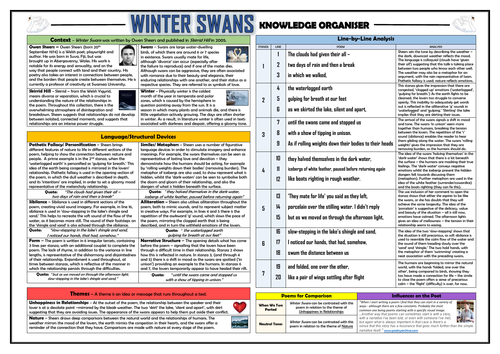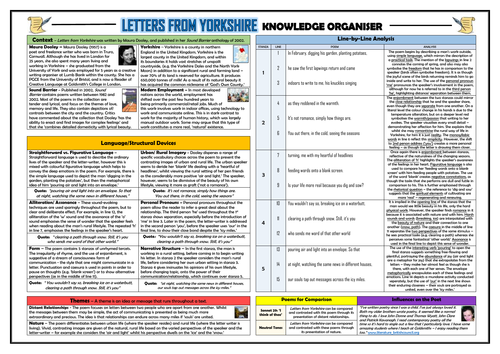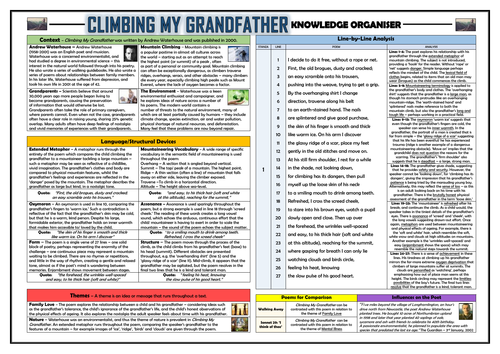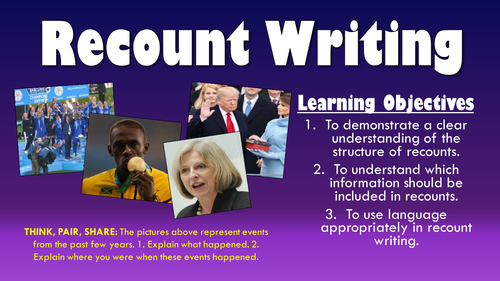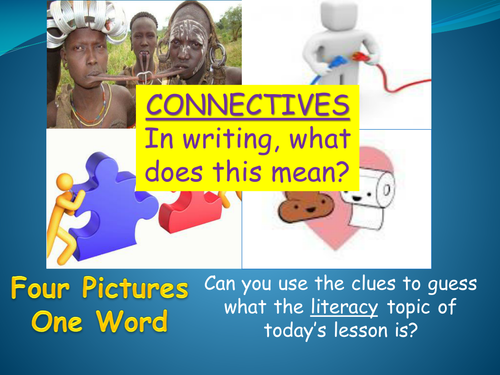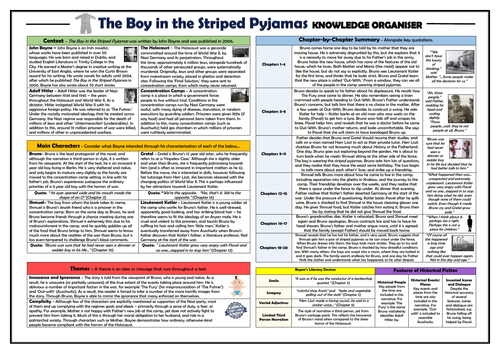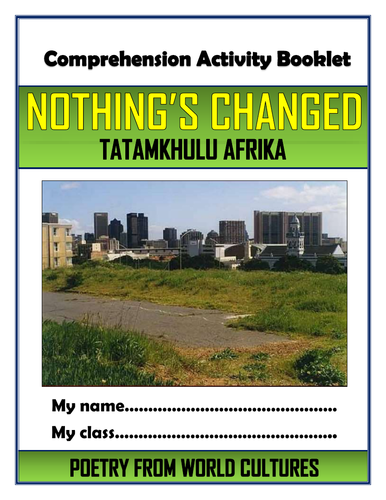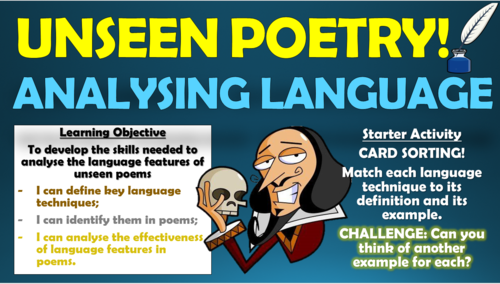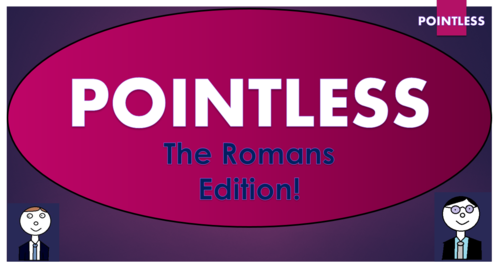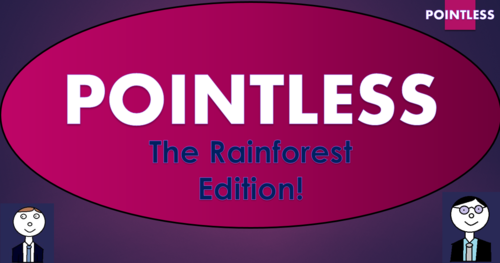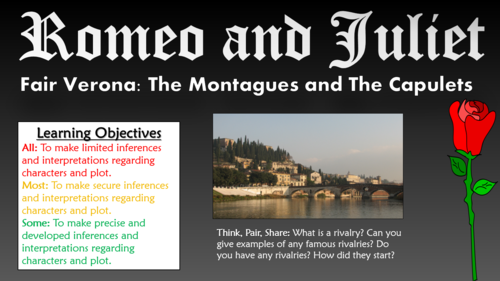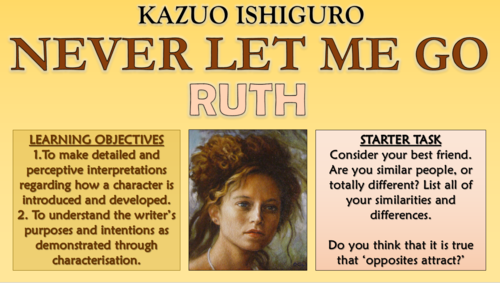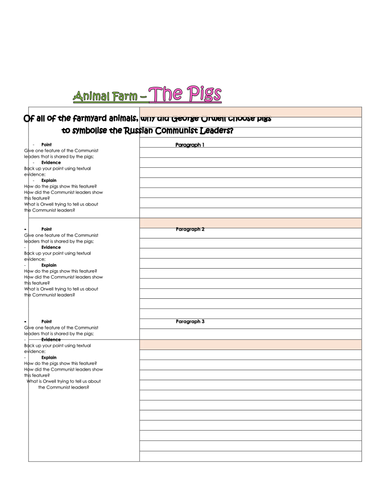
3k+Uploads
1857k+Views
2205k+Downloads
All resources

Winter Swans - Owen Sheers - Knowledge Organiser/ Revision Mat!
This detailed and visually-appealing resource offers a complete reference point for students learning or revising Owen Sheers’ love and relationships poem 'Winter Swans.’ It contains comprehensive sections on:
Context;
Line-by-Line Analysis;
Poetic Devices/ Language Devices;
Themes;
Form/Structure;
Poems for Comparison;
The Poet’s Influences.
Key words and ideas are underlined for easy reference. The resource is designed to be printed onto A3, and is provided as both a PDF and a Word version (so that you can edit if you want to). All images used are licensed for commercial use and are cited on a separate document (included).

Letters from Yorkshire Knowledge Organiser/ Revision Mat!
This detailed and visually-appealing resource offers a complete reference point for students learning or revising Maura Dooley’s love and relationships poem 'Letters from Yorkshire.’ It contains comprehensive sections on:
Context;
Line-by-Line Analysis;
Poetic Devices/ Language Devices;
Themes;
Form/Structure;
Poems for Comparison;
The Poet’s Influences.
Key words and ideas are underlined for easy reference. The resource is designed to be printed onto A3, and is provided as both a PDF and a Word version (so that you can edit if you want to). All images used are licensed for commercial use and are cited on a separate document (included).

Climbing My Grandfather Knowledge Organiser - Revision Mat!
This detailed and visually-appealing resource offers a complete reference point for students learning or revising Andrew Waterhouse’s love and relationships poem Climbing My Grandfather.’ It contains comprehensive sections on:
Context;
Line-by-Line Analysis;
Poetic Devices/ Language Devices;
Themes;
Form/Structure;
Poems for Comparison;
The Poet’s Influences.
Key words and ideas are underlined for easy reference. The resource is designed to be printed onto A3, and is provided as both a PDF and a Word version (so that you can edit if you want to). All images used are licensed for commercial use and are cited on a separate document (included).

Skellig - KS2 Comprehension Activities Booklet!
This resource booklet contains a wide range of age-appropriate, engaging, and meaningful comprehension activities for use throughout the reading of David Almond's 'Skellig.' Teachers have found them particularly useful in comprehension or guided reading sessions. They are perfect for aiding the progress of children towards meeting the upper KS2 expectations within the new National Curriculum framework. Children love learning from these resources, whilst they are also of great use to teachers, as there is explicit information within each task regarding which comprehension strands the task is designed to demonstrate. They also relate to key extracts, characters, and themes from the story, ensuring that children gain a deep understanding of the text.
Activities within the booklet include:
- 'An Interview with Michael' - to enable students to demonstrate that they can: 'Understand what is read by drawing on information from more than one paragraph, identifying key details that support the main ideas, and using quotations for illustration;'
- 'Almond's Description' - to enable students to demonstrate that they can: 'Explain meanings of words that they know and ask the meaning of new words. Link the meaning of new words to words that they already know;'
- 'Mina!' - to enable students to demonstrate that they can: 'Understand what is read by drawing on information from more than one paragraph, identifying key details that support the main ideas, and using quotations for illustration;'
- 'Figurative Language in Skellig' - to enable students to demonstrate that they can: 'Discuss and evaluate how authors use language, including figurative language, to create an impact on the reader.'
Plus many, many more activities (the booklet is 21 pages in length!) I've also added it as a PDF in case the formatting differs on your computer.
All images are licensed for commercial use, and are cited on a separate document (included).

The Woman in Black Pointless Game!
Based on the popular game show 'Pointless', this resource is perfect for use as a whole lesson resource, enrichment option, or revision tool. Editable, so that you can change to any other topic or change questions. (I've also added a blank template so that you can make your own games from scratch). Containing almost 30 slides of sound clips, engaging visuals, and suitably challenging questions, this resource is effective at both promoting engagement and enhancing learning. There are several full rounds of questions to build or revisit knowledge of characters, plot, and themes in 'The Woman in Black.'
Round 1. The characters in The Woman in Black
Round 2. Quotations from the text
Round 3. Settings, Themes, and Objects
Round 4. Places where the woman appears.
The nature of this game ensures that the resource can challenge students of all levels.
A blank template has also been added, so that you can create your own games!

Recount Writing! (Double Lesson!)
This stimulating and informative lesson aims to improve students’ ability to adapt the style of their writing to suit their audience and purpose. In particular, they demonstrate an understanding of the structure, language, and subject matter of recount texts through their creative writing attempts.
Students follow a clear and logical learning journey, in which they:
-Define recounts and their key features;
-Read extracts of recounts, and analyse the structural and language techniques used;
-Demonstrate that they can identify, analyse and apply key techniques such as time connectives and specific noun phrases;
-Create a success criteria for effective recount writing (a ready-made success criteria is included)
-Write their own recount, using the techniques that they have learnt;
-Peer/self-assess their recount attempts.
There are enough resources here for two lessons, including:
-Visually engaging whole-lesson PowerPoint;
-Recount extract and key questions;
-Structuring Task Cards
-Success Criteria;
-Step-by-step lesson plan.
All images are licensed for commercial use, and are cited on the final page of the slide.

Frankenstein: The Monster's Murders: Justified?
This lesson aims to improve students’ understanding of plot and characterisation in Mary Shelley’s gothic horror novel 'Frankenstein,' through critical engagement with the monster’s justification for murder. The lesson places a particular focus upon the hardship and suffering experienced by the monster, in addition to the discrimination and loneliness that he experiences. The lesson concludes with students completing a highly-informed argumentative piece, detailing whether they feel the monster was justified or not.
The lesson follows a step-by-step learning journey, in which children learn through:
- Recalling and understanding who, when, and why the monster kills individuals throughout the text;
- Reading and understanding key extracts from the text, which include third-person narration from the monster discussing his actions;
- Comprehending the key elements of plot development and character, through interpreting and inferring the key meanings in extracts;
- Listing opposite sides of an argument in regarding the monster's justification, in order to build a stronger case;
- Using the features of writing to argue in order to contend whether the monster was justified in his actions or not;
- Peer assessing each other's learning attempts.
Included is:
- Whole lesson PowerPoint - colourful and substantial; (including an animated Frankenstein's monster to guide them through the lesson);
- Comprehension worksheet (and a teacher answer sheet);
- Extracts from Chapters 16 and 24;
- Card-sorting resources for the introduction task;
- Writing to Argue Help-sheet;
- Analysis template with success criteria for creating well-structured responses;
- Comprehensive lesson plan.
There are also opportunities for group learning, peer assessment, and whole class discussion. This was originally taught to middle-ability year 9/10 groups, but can easily be differentiated for groups of different ages and abilities.
All images are licensed for commercial use, and image rights are listed on the last page of the presentation.

Pupil Progress Performance Grids
For use alongside data captures and discussions about pupil progress, this succinct performance grid enables observers to gauge and categorise department and individual teacher approaches to pupil progress data, using OFSTED guidance. The first page of the document provides descriptors of 'outstanding', 'good', 'requires improvement' and 'inadequate' feedback within appropriately considered focus areas, for example: Rate of Progress, Accuracy, Noticing Trends and Plotting Interventions, etc. Schools that already employ this tool often opt to highlight the descriptors on this page as they complete the scrutiny, thus creating a bigger picture of the strengths and areas for improvement observed. This can also be a helpful aid in arriving at an overall judgement, should your school opt to arrive at one. The second page allows observers to further pinpoint and describe the 'www' (what went well) and 'ebi' (even better if) aspects of the feedback, to aid teacher/department in improving their practice.

VCOP - Connectives
Perfect for English lessons, or as part of a literacy across the curriculum scheme, the VCOP lessons aim to build students' fundamental writing skills.
Engaging, differentiated, and easily adaptable, this lesson aims to improve students' skills at using varied and appropriate connectives in their writing, following a logical learning journey to ensure that students learn in bite-size steps:
- Defining connectives types;
- Identifying connectives in humorous writing examples;
- Analysing connectives in an interesting descriptive passage;
- Creating a descriptive piece, using varied connectives;
- Peer or self evaluating their writing attempts, and in particular the use of connectives
Resources, worksheets, and a lesson plan are provided.
This resource can either be bought alone, or as part of a VCOP bundle (see resource VCOP - All lessons & scheme - vocabulary, connectives, openers, punctuation) for just £1 more.

The Boy in the Striped Pyjamas Knowledge Organiser/ Revision Mat!
This detailed and visually-appealing resource offers a complete reference point for students learning or revising John Boyne’s ‘The Boy in the Striped Pyjamas.’ It contains comprehensive sections on:
Context;
Chapter by Chapter Summary (with quotes);
Main Characters;
Themes;
Language Devices;
Features of Historical Fiction.
The resource is designed to be printed onto A3, and is provided as both a PDF and a Word version (so that you can edit if you want to). All images used are licensed for commercial use and are cited on a separate document (included).

Island Man Comprehension Activities Booklet!
This 16-page resource booklet contains a wide range of challenging and engaging comprehension activities for use throughout the reading of Grace Nichol’s poem 'Island Man.’ They are perfect for aiding the progress of students learning poetry either in KS3 and KS4 in preparation for poetry/unseen poetry at GCSE, as the tasks draw on English Literature assessment objectives - suitable for all examining bodies - it is clearly highlighted within each task regarding which assessment strands the task is designed to demonstrate.
The booklet is provided in both Word (to allow for easy editing) and PDF (to ensure for consistency of formatting between computers).
Activities within the booklet include (amongst many others):
‘Analysing Context’ - helping students to ‘Show understanding of the relationships between texts and the contexts in which they were written.’
‘Analysing Subject Matter, Language and Structure’ - to help students to ‘Analyse the language, form and structure used by a writer to create meanings and effects, using relevant subject terminology where appropriate.’
‘Diary Entry’ - to help students to ‘Use a range of vocabulary and sentence structures for clarity, purpose and effect, with accurate spelling and punctuation. Make an informed personal response, recognising that other responses to a text are possible and evaluating these.’
‘The Speaker’ - to help students to ‘Read, understand and respond to texts. Students should be able to: maintain a critical style and develop an informed personal response use textual references, including quotations, to support and illustrate interpretations.’

Nothing's Changed - Comprehension Activities Booklet!
This 16-page resource booklet contains a wide range of challenging and engaging comprehension activities for use throughout the reading of Tatamkhulu Afrika’s poem 'Nothing’s Changed.’ They are perfect for aiding the progress of students learning poetry either in KS3 and KS4 in preparation for poetry/unseen poetry at GCSE, as the tasks draw on English Literature assessment objectives - suitable for all examining bodies - it is clearly highlighted within each task regarding which assessment strands the task is designed to demonstrate.
The booklet is provided in both Word (to allow for easy editing) and PDF (to ensure for consistency of formatting between computers).
Activities within the booklet include (amongst many others):
‘Analysing Context’ - helping students to ‘Show understanding of the relationships between texts and the contexts in which they were written.’
‘Analysing Subject Matter, Language and Structure’ - to help students to ‘Analyse the language, form and structure used by a writer to create meanings and effects, using relevant subject terminology where appropriate.’
‘Diary Entry’ - to help students to ‘Use a range of vocabulary and sentence structures for clarity, purpose and effect, with accurate spelling and punctuation. Make an informed personal response, recognising that other responses to a text are possible and evaluating these.’
‘The Speaker’ - to help students to ‘Read, understand and respond to texts. Students should be able to: maintain a critical style and develop an informed personal response use textual references, including quotations, to support and illustrate interpretations.’

Blessing - Imtiaz Dharker - Comprehension Activities Booklet!
This 16-page resource booklet contains a wide range of challenging and engaging comprehension activities for use throughout the reading of Imtiaz Dharker’s poem 'Blessing.’ They are perfect for aiding the progress of students learning poetry either in KS3 and KS4 in preparation for poetry/unseen poetry at GCSE, as the tasks draw on English Literature assessment objectives - suitable for all examining bodies - it is clearly highlighted within each task regarding which assessment strands the task is designed to demonstrate.
The booklet is provided in both Word (to allow for easy editing) and PDF (to ensure for consistency of formatting between computers).
Activities within the booklet include (amongst many others):
‘Analysing Context’ - helping students to ‘Show understanding of the relationships between texts and the contexts in which they were written.’
‘Analysing Subject Matter, Language and Structure’ - to help students to ‘Analyse the language, form and structure used by a writer to create meanings and effects, using relevant subject terminology where appropriate.’
‘Diary Entry’ - to help students to ‘Use a range of vocabulary and sentence structures for clarity, purpose and effect, with accurate spelling and punctuation. Make an informed personal response, recognising that other responses to a text are possible and evaluating these.’
‘The Speaker’ - to help students to ‘Read, understand and respond to texts. Students should be able to: maintain a critical style and develop an informed personal response use textual references, including quotations, to support and illustrate interpretations.’

Unseen Poetry - Analysing Language!
This engaging and interesting lesson enables students to develop the knowledge and skills needed to analyse the language features of previously unseen poems. In particular, they define and understand each of the key language devices, practice identifying them in poems and analyse their effectiveness upon the reader.
The lesson utilises a range of tasks, that require students to be both independent and collaborative learners. It follows this learning journey:
-Defining and exemplifying each of the language features through a group card-sorting activity;
-Identifying each of the language features in examples of poetry in a fun, interactive game;
-Understanding the writer’s intentions and the effect on the reader of various language techniques;
-Applying their understanding of the language features and their effect to a comparison between two related poems;
-Peer-evaluating their learning in the lesson.
Included in this resource pack are:
-A well-presented, thorough, and informative, whole-lesson PowerPoint presentation;
-Language features cards for the card-sorting activity;
-‘Analysing Language Techniques’ worksheet for the development task;
-Copies of the poems ‘Dulce et Decorum est’ by Wilfred Owen and ‘The Soldier’ by Rupert Brooke for annotation (both freely available online);
-A structure strip, a model example and a success criteria to guide the students throughout their comparative essay attempts;
-A comprehensive teacher guidance form/lesson plan to assist delivery.
Resources are provided in both Word (for easy editing - find in the zip file)and PDF (to prevent formatting issues between computers).
All images in this resource are licensed for commercial use, and are cited on the final slide of the lesson presentation.

Romans Pointless Game!
Based on the popular game show ‘Pointless,’ this resource is perfect for use as a whole lesson resource, enrichment option, or revision tool. Editable, so that you can change to any other topic or change questions. (I’ve also added a blank template so that you can make your own games from scratch). Containing 24 slides of sound clips, engaging visuals, and suitably challenging questions, this resource is effective at both promoting engagement and enhancing learning. There are several full rounds of questions to build or revisit knowledge of Romans.
Round 1. Roman Leaders/ Emperors
Round 2. Places in the Roman Empire
Round 3. Key Dates
Round 4. Objects and Ideas in Roman Times
Round 5. Roman Words
The nature of this game ensures that the resource can challenge students of all levels.
A blank template has also been added, so that you can create your own games!

The Rainforest - Pointless Game!
Based on the popular game show ‘Pointless,’ this resource is perfect for use as a whole lesson resource, enrichment option, or revision tool. Editable, so that you can change to any other topic or change questions. (I’ve also added a blank template so that you can make your own games from scratch). Containing 25 slides of sound clips, engaging visuals, and suitably challenging questions, this resource is effective at both promoting engagement and enhancing learning. There are several full rounds of questions to build or revisit knowledge of The Rainforest.
Round 1. Countries with Rainforests
Round 2. Birds of the Rainforest
Round 3. Name the Rainforest!
Round 4. Anagrams Round - (Layers of the Rainforest)
Round 5. Mammals of the Rainforest
The nature of this game ensures that the resource can challenge students of all levels.
A blank template has also been added, so that you can create your own games!

Mother, Any Distance... Simon Armitage - Love/ Relationships Poetry
This interesting and engaging lesson enables students to build their knowledge of the content, language, and structure of Simon Armitage’s contemporary relationships poem ‘Mother, Any Distance...’ In particular, students learn how the poet’s use of figurative language portrays the key messages in the poem, for example the maternal relationship between the speaker and his mother.
Students learn through a logical and step-by-step learning journey, including:
-Discussing and applying the key messages and meanings in the poem;
-Understanding key contextual information about the poet and his life;
-Reading and interpreting the poem;
-Understanding the poem, with a particular emphasis upon the content, language, and structural features;
- Identifying and analysing the poet's use of figurative language;
-Writing an extended analysis piece based upon how Simon Armitage presents the strength of the maternal bond in Mother, Any Distance;
-Peer assessing their partners' analysis attempts.
Included is:
- Whole lesson PowerPoint - colourful, engaging and substantial; (including hyperlink to a reading of the poem)
- Copy of poem;
- Figurative Language in 'Mother, Any Distance' worksheet;
- Figurative Language in 'Mother, Any Distance' answer-sheet;
- Analysis template with in-built success criteria for creating well-structured responses;
- Comprehensive lesson plan.
There are also opportunities for group learning, peer assessment, and whole class discussion. This was originally taught to middle-ability year 9/10 groups, but can easily be differentiated for groups of different ages and abilities.
All images are licensed for commercial use, and image rights are listed on the last page of the presentation.

Romeo and Juliet: The Montagues and The Capulets (Analysis of Act 1 Scene 1)
This lesson enables students to gain a detailed understanding of the opening scene in William Shakespeare’s Romeo and Juliet. Students learn to make sustained and developed inferences and interpretations in relation to both characters and plot. Students also produce a family tree to demonstrate the relationships between the characters, using colourful and interesting images and resources.
The lesson utilises a range of tasks, that require students to be attentive and interactive learners. It follows this learning journey:
- Defining the key term 'feud' and apply this understanding to a range of contexts;
- Reading and interpreting the prologue and Act 1 Scene 1, and establishing how Shakespeare sets the scene in Verona;
- Reflecting upon what effect this may have had on audiences at the time;
- Making detailed inferences/ interpretations into clues about characterisation and social structure;
- Analysing Shakespeare's intentions in including such an energetic scene at the outset of the play;
- Peer/self evaluating the learning in the lesson.
Included in this resource pack are:
- A well-presented, thorough, and informative, whole-lesson PowerPoint presentation;
- Resources for the reading and interpreting activity - full scene transcript with space for notes;
- A template to help scaffold the main task, complete with P.E.E instructions;
- A family tree template and character list;
- A challenging and thought-provoking worksheet, and an answer sheet for the teacher.
All images in this resource are licensed for commercial use, and are cited on the final slide of the lesson presentation.

Never Let Me Go - Ruth!
This engaging and informative lesson enables students to make clear, detailed and well-informed interpretations of the character of Ruth in ‘Never Let Me Go.’ In particular, students develop their understanding of how the character is introduced and developed, drawing on a varied range of textual evidence from across the novel, before demonstrating their understanding of how the character through writing a letter from her viewpoint.
The lesson follows a step-by-step learning journey, in which children learn through:
Reading an extract detailing Ruth’s introduction in the novel and answering comprehension questions about the initial portrayal of her character;
Finding quotations in order to back up ideas about how her character is developed over the course of the novel;
Understanding how Ruth reflects Ishiguro’s key meanings and ideas;
Using their deep understanding of Ruth’s character to write a letter from her perspective;
Peer assessing each others’ learning attempts.
Included is:
Whole lesson PowerPoint - colourful and comprehensive;
Quote Detectives Worksheet;
Selected extract (from chapter 5);
Comprehensive lesson plan.
There are also opportunities for group learning, speaking and listening, peer assessment, and whole class discussion. I originally used these resources with year 10 and 11 classes, however colleagues have used them for between year 9 and year 13 with some adaptations.
All images are licensed for commercial use, and image rights are listed on the last page of the presentation.

Animal Farm: The Rise of the Pigs!
These resources enable students to understand and analyse the rise of the pigs towards power in chapters 3 and 4 of George Orwell’s Animal Farm. More precisely, students learn to make clear and accurate interpretations about the emergence of the various characters as leaders on the farm, with appropriate links to individual characters and their allegorical relationship to context.
Students learn through the following tasks:
- Gauging and collaborating prior knowledge through a discussion-based starter task;
- Reading chapters 3 and 4 and demonstrating their understanding through a related group quiz activity;
- Developing their understanding of the changing nature of characters, and their allegorical ties, through a quotation retrieval mind mapping task;
- Analysing the allegorical nature of the pigs, by further exploring their characteristics in relation to those of the communist Russian leaders of the early 20th century;
- Peer assessing their partners' learning attempts.
The following resources are provided:
- Engaging and colourful step-by-step PowerPoint
- Teacher lesson guidance/plan;
- Analytical paragraphs worksheet;
- Mind-mapping activity template;
- Copies of Chapters 3 and 4.
All images are licensed for commercial use, and are cited on the final slide of the PowerPoint.

